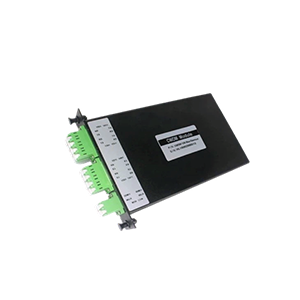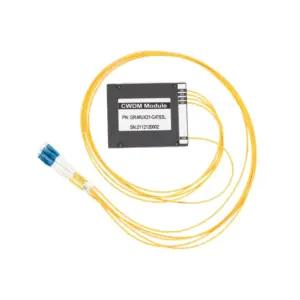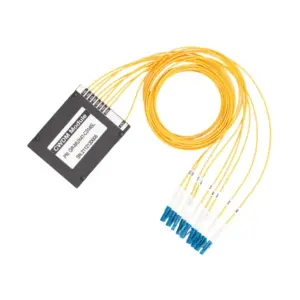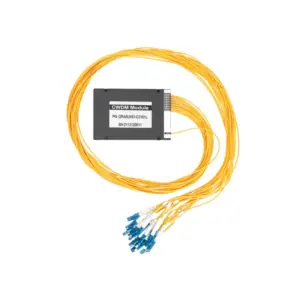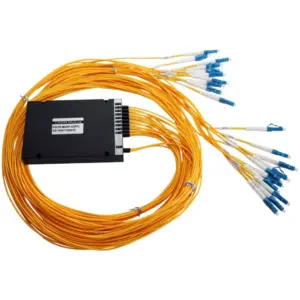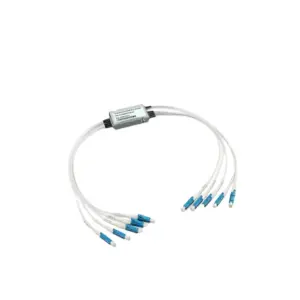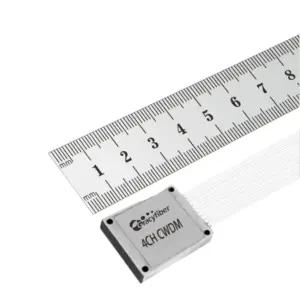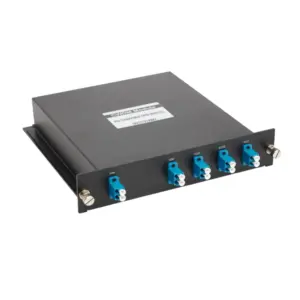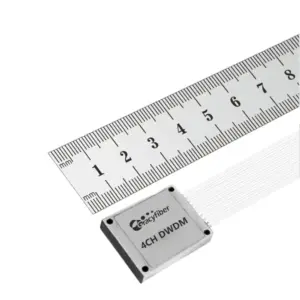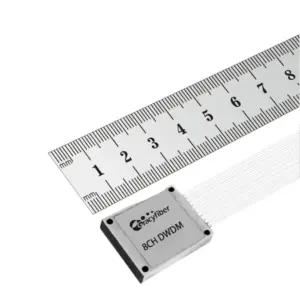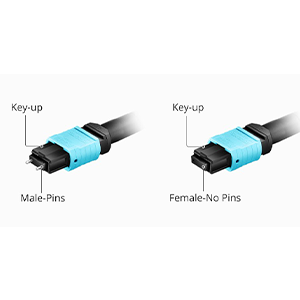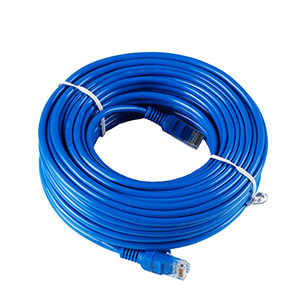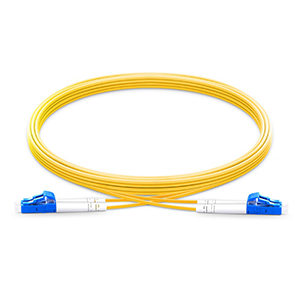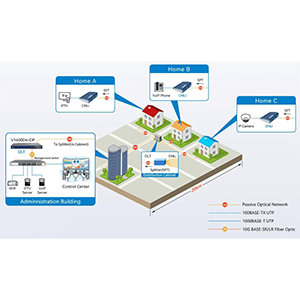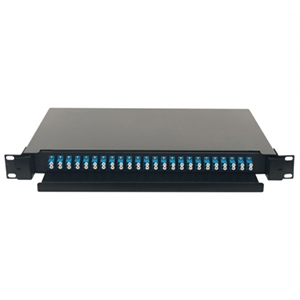Welcome to this blog! In this article, I will focus on the two main types of Wavelength Division Multiplexing (WDM) technology: Coarse Wavelength Division Multiplexing (CWDM) and Dense Wavelength Division Multiplexing (DWDM). By in-depth understanding of their principles, characteristics and application areas, you will better understand how to choose a WDM solution that suits your needs.
WDM technology is a technology widely used in the field of optical communications. It allows optical signals of multiple wavelengths to be transmitted simultaneously on a single optical fiber, thereby improving fiber utilization and transmission capacity. CWDM and DWDM are both different variants based on WDM technology, and they differ in wavelength selection and transmission capacity. CWDM is usually used for shorter distance optical signal transmission, while DWDM is suitable for longer distance and high-capacity optical communication systems.
CWDM systems use a wide wavelength spacing, usually a few nanometers, to achieve separation and transmission of optical signals. It is suitable for short-distance communications, such as data center interconnects or metropolitan area networks. One of the advantages of a CWDM system is its lower cost because the optical splitting and multiplexing equipment it uses is relatively simple. However, the transmission capacity of CWDM systems is relatively low because the wavelength intervals are large and usually can only support transmission of a few wavelengths.
CWDM (Coarse Wavelength Division Multiplexing)
CWDM is an optical transmission system based on wavelength division multiplexing (WDM) technology, which uses a wide wavelength interval to multiplex and transmit optical signals. The basic principles and characteristics of CWDM will be explained below, and its working methods, application fields, wavelength range, channel spacing and transmission distance limitations will be introduced, as well as the advantages and applicable scenarios of CWDM will be emphasized.
Basic principles and features:
The basic principle of CWDM is to multiplex multiple optical signals into one optical fiber using different wavelengths to achieve simultaneous transmission of multiple optical signals. The wavelength spacing of CWDM systems is usually in the range of a few nanometers, such as 20 nanometers or 40 nanometers. Adjacent wavelengths are assigned to different optical signals, which can be transmitted simultaneously and demultiplexed at the receiving end.
The characteristics of CWDM are as follows:
- Wider wavelength spacing: CWDM systems use larger wavelength spacing, so the mutual interference between optical signals is smaller, and the manufacturing and adjustment costs of equipment are lower.
- Low cost: Compared with DWDM systems, CWDM equipment and component costs are lower, which makes CWDM an economical choice for applications such as shorter-distance communications and data center interconnection.
- Low transmission capacity: Due to the large wavelength spacing, the transmission capacity of the CWDM system is relatively low, and usually only supports transmission of a few to a dozen wavelengths.
- Flexibility: CWDM systems can be expanded according to needs, allowing the flexibility to increase or decrease the number of channels.
Working methods and application areas:
The CWDM system works as follows:
- Multiplexing: Optical signals of different wavelengths are multiplexed into an optical fiber to form a multi-wavelength optical signal.
- Transmission: Multi-wavelength optical signals are transmitted through optical fibers and can be transmitted on different optical fiber links.
- Demultiplexing: At the receiving end, the optical signal passes through the demultiplexer to separate the optical signals of different wavelengths.
CWDM is widely used in the following fields:
- Data center interconnection: CWDM is used to connect optical fiber links between data centers to achieve high-speed, high-bandwidth data transmission.
- Metropolitan area network: CWDM is used for communication networks within a city, such as connecting different office buildings or branches.
- Video transmission: CWDM can be used to transmit multiple video signals simultaneously, such as surveillance systems or broadcast transmissions.
Wavelength range, channel spacing and transmission distance restrictions:
The wavelength range of CWDM is usually between 1260 nanometers and 1625 nanometers, covering C-band and L-band. Channel spacing is typically 20nm or 40nm, depending on the system design and needs. The transmission distance limit of a CWDM system depends on several factors, including fiber loss, optical signal power, and other attenuation in the fiber link.
Advantages and applicable scenarios:
CWDM has the following advantages and applicable scenarios:
- Low cost: The CWDM system is lower in cost than the DWDM system and is suitable for application scenarios with limited budgets.
- Flexibility: The number of channels in the CWDM system can be flexibly expanded or reduced according to needs, providing flexibility and scalability.
- Suitable for short-distance communications: CWDM is usually used for shorter-distance communications, such as data center interconnection or metropolitan area networks.
- Compatibility: CWDM systems are compatible with existing fiber optic infrastructure and can be used with other optical transmission technologies and protocols.
- Provide bandwidth expansion: By transmitting multiple wavelengths simultaneously, CWDM can provide higher transmission capacity and bandwidth expansion capabilities.
To sum up, CWDM is an affordable and flexible optical transmission technology suitable for shorter distances and budget-constrained applications. It provides bandwidth expansion and flexibility and is compatible with existing fiber optic infrastructure. When selecting optical transmission technology, factors such as specific needs, budget, and transmission distance need to be considered to determine whether to use CWDM technology.
DWDM (Dense Wavelength Division Multiplexing)
DWDM is a high-capacity optical transmission system using wavelength division multiplexing (WDM) technology, which uses narrow wavelength intervals to achieve simultaneous transmission of a large number of wavelengths. The basic principles and characteristics of DWDM will be explained below, and its working methods, application fields, wavelength range, channel spacing and transmission distance capabilities will be introduced, as well as the advantages and applicable scenarios of DWDM will be emphasized.
Basic principles and features:
The basic principle of DWDM is to use narrow wavelength intervals to multiplex multiple wavelength optical signals into one optical fiber to achieve high-density optical signal transmission. The wavelength spacing of DWDM systems is usually in the range of a few nanometers or even smaller, such as 0.8 nanometers or 0.4 nanometers. Optical signals of different wavelengths can be transmitted simultaneously and demultiplexed at the receiving end.
The characteristics of DWDM are as follows:
- High transmission capacity: Due to the smaller wavelength spacing, the DWDM system can transmit dozens or even hundreds of wavelengths at the same time, greatly improving fiber utilization and transmission capacity.
- High density: The DWDM system can achieve high-density wavelength multiplexing within a limited spectral range, allowing more optical signals to be transmitted on the same optical fiber.
- Long-distance transmission: The DWDM system is suitable for long-distance transmission, such as intercontinental optical fiber transmission or optical communication backbone network, because it can compensate for the attenuation in optical fiber transmission through optical amplifiers.
- Multi-protocol support: The DWDM system can transmit different optical communication protocols at the same time, such as SONET, SDH, Ethernet, etc., providing flexible compatibility and interoperability.
Working methods and application areas:
The DWDM system works as follows:
- Multiplexing: Optical signals of different wavelengths are multiplexed into an optical fiber through a multiplexer to form a high-density multi-wavelength optical signal.
- Transmission: Multi-wavelength optical signals are transmitted through optical fibers, which can cover long-distance optical fiber links.
- Demultiplexing: At the receiving end, the optical signal passes through the demultiplexer to separate the optical signals of different wavelengths.
DWDM is widely used in the following fields:
- Optical communication backbone network: DWDM is the key technology for building optical communication backbone network, which can realize high-capacity and high-speed optical signal transmission and support long-distance communication.
- Intercontinental optical fiber transmission: DWDM is used to connect optical fiber networks between different continents to achieve global high-speed data transmission and interconnection.
- Telecom operators: DWDM is widely used by telecom operators to provide high-quality voice, data and video transmission services.
- Large enterprise network: DWDM is used to connect branches in large enterprise networks to achieve high-speed, reliable data transmission and communication.
Wavelength range, channel spacing and transmission distance capabilities:
The wavelength range of DWDM is usually between 1525 nanometers and 1610 nanometers, covering C-band and L-band. Channel spacing is typically 0.8nm or 0.4nm, depending on the system design and requirements. The transmission distance capability of the DWDM system depends on many factors, including the quality of the optical fiber, the gain of the optical amplifier, and the modulation technology. Typically, DWDM systems can achieve transmission distances of hundreds to thousands of kilometers, and the transmission distance can be extended by using optical amplifiers and fiber attenuation compensation.
Advantages and applicable scenarios of DWDM:
DWDM has the following advantages:
- High-capacity transmission: The DWDM system can transmit a large number of wavelengths simultaneously to achieve high-capacity optical signal transmission to meet the growing demand for data transmission.
- Flexibility and compatibility: The DWDM system supports multi-protocol transmission, can adapt to different optical communication and data communication needs, and is compatible with existing optical fiber networks.
- High reliability: The DWDM system adopts redundant design and optical fiber protection technology to provide highly reliable data transmission and communication services.
- Efficient use of optical fiber: By multiplexing optical signals of different wavelengths, the DWDM system can fully utilize the optical fiber bandwidth and improve the utilization rate of the optical fiber.
DWDM is suitable for the following scenarios:
- High-capacity data center interconnection: DWDM can realize high-speed, high-capacity interconnection between data centers and support large-scale data transmission and storage.
- Remote storage applications: DWDM can be used for remote backup, disaster recovery and other storage applications to achieve reliable data transmission and storage.
- High-bandwidth Internet access: DWDM can be used to provide high-speed, high-bandwidth Internet access services to meet users’ demand for large traffic and high-speed data.
- Cross-regional network connection: DWDM can connect networks in different regions, supports long-distance, high-speed data transmission, and is suitable for cross-continental and cross-country communication needs.
In general, DWDM technology achieves high-density and high-capacity optical signal transmission through wavelength multiplexing, and is widely used in optical communication backbone networks, intercontinental optical fiber transmission, and large enterprise networks. It has high flexibility, high reliability and efficient fiber utilization, and is suitable for scenarios requiring large capacity and long-distance transmission.
Comparison between CWDM and DWDM
CWDM (Coarse Wavelength Division Multiplexing) and DWDM (Dense Wavelength Division Multiplexing) are wavelength division multiplexing (WDM) technologies commonly used in optical fiber communications to achieve simultaneous transmission of multiple wavelength optical signals. The following will compare the key differences and characteristics of CWDM and DWDM, and compare their similarities and differences in wavelength range, channel spacing, transmission distance, system complexity and cost. Finally, factors that need to be considered when choosing CWDM or DWDM in different application scenarios will be explained.
Key differences and features:
-
Wavelength range: The wavelength range of CWDM is usually between 1260 nanometers and 1625 nanometers, while the wavelength range of DWDM is usually between 1525 nanometers and 1610 nanometers. DWDM has a higher wavelength density and can transmit more wavelength optical signals at the same time.
-
Channel spacing: The channel spacing of CWDM is usually 20 nanometers, while the channel spacing of DWDM is usually 0.8 nanometers or 0.4 nanometers. DWDM has smaller channel spacing and can achieve higher wavelength multiplexing density.
-
Transmission distance: Generally speaking, the transmission distance capability of DWDM system is longer than that of CWDM. Because the DWDM system uses optical amplifiers to compensate for attenuation during transmission, transmission distances of hundreds to thousands of kilometers can be achieved. The transmission distance of the CWDM system is usually shorter and is suitable for shorter distance communication needs.
-
System complexity: Relatively speaking, the complexity of DWDM systems is usually higher than that of CWDM systems. DWDM systems require more precise wavelength control and demultiplexing technology, as well as more advanced optical fiber amplifiers and filters. CWDM systems are relatively simple and do not require such high-precision wavelength control and multiplexing devices.
-
Cost: Generally speaking, CWDM systems have lower costs than DWDM systems. The components and technologies used in CWDM systems are relatively simple, easier to manufacture and deploy, and therefore less expensive. The cost of DWDM systems is higher, mainly due to the need for more sophisticated components and complex wavelength control technology.
In terms of wavelength range, channel spacing, transmission distance, system complexity and cost, CWDM and DWDM have the following similarities and differences:
- Wavelength range: CWDM has a wider wavelength range and covers a larger spectral range, while DWDM has a narrower wavelength range.Suitable for high-density wavelength multiplexing.
- Channel spacing: CWDM has a larger channel spacing and is suitable for low-density wavelength multiplexing, while DWDM has a smaller channel spacing and is suitable for high-density wavelength multiplexing.
- Transmission distance: The transmission distance capability of DWDM system is usually longer than that of CWDM system, which is suitable for long-distance transmission requirements.
- System complexity: DWDM systems are relatively complex and require more sophisticated wavelength control and demultiplexing technology, while CWDM systems are relatively simple.
- Cost: CWDM systems generally cost less than DWDM systems.
The following factors need to be considered when choosing CWDM or DWDM:
-
Transmission distance: If long-distance transmission is required, especially intercontinental or cross-country transmission, DWDM is a better choice because it has better transmission distance capabilities.
-
Bandwidth requirements: If a large amount of data or high-bandwidth applications need to be transmitted simultaneously, such as high-definition video, cloud computing, etc., DWDM can provide higher wavelength reuse density and bandwidth scalability.
-
System complexity and reliability requirements: If the system requirements are simple, easy to deploy and maintain, and reliability is the primary consideration, CWDM may be a better choice. The CWDM system is relatively simple and does not require complex wavelength control and demultiplexing technology like the DWDM system.
-
Budget constraints: When budget is limited, CWDM may be a more cost-effective option. The cost of CWDM systems is generally lower, while the cost of DWDM systems is higher.
-
Future scalability: If you anticipate that your system will require higher bandwidth and more wavelength multiplexing in the future, DWDM may be a better choice. DWDM systems have higher wavelength reuse density and can meet future growth needs.
It should be noted that the above factors are only general guidance. When actually choosing CWDM or DWDM, specific application requirements, budget constraints, network size and other factors need to be considered. The best choice should be based on a comprehensive consideration of the above factors and further discussion and evaluation with the supplier.
Summary:
Thank you for reading this blog. We have focused on the two main types of Wavelength Division Multiplexing (WDM) technology: Coarse Wavelength Division Multiplexing (CWDM) and Dense Wavelength Division Multiplexing (DWDM). Through an in-depth discussion of their principles, characteristics and application areas, we hope you can better understand and choose a WDM solution that suits your needs.
WDM FAQ
1.Coarse Wavelength Division Multiplexing (CWDM): CWDM uses a wider spacing between wavelengths compared to Dense Wavelength Division Multiplexing (DWDM). The typical channel spacing in CWDM is around 20 nanometers (nm), allowing for up to 18 wavelengths to be multiplexed over a single fiber. CWDM is often used for shorter-distance applications, such as metropolitan area networks (MANs) or campus networks.
2.Dense Wavelength Division Multiplexing (DWDM): DWDM utilizes narrower spacing between wavelengths, enabling a higher number of wavelengths to be multiplexed on a single fiber. The channel spacing in DWDM is typically less than 1 nm, and it can support hundreds of wavelengths or even more. DWDM is commonly used in long-haul and ultra-long-haul optical transmission systems, enabling high-capacity data transmission over long distances.
Coarse Wavelength Division Multiplexing (CWDM) offers several advantages, including:
1.Cost-effectiveness: CWDM systems are generally more cost-effective compared to Dense Wavelength Division Multiplexing (DWDM) systems. The wider spacing between wavelengths in CWDM allows for the use of less expensive optical components, resulting in lower equipment costs.
2.Simplified equipment requirements: CWDM systems require simpler and less complex equipment compared to DWDM. The wider channel spacing in CWDM reduces the need for precise wavelength stabilization and enables the use of uncooled lasers, simplifying the system design and reducing operational complexities.
3.Flexibility and scalability: CWDM offers flexibility in network design and scalability. With up to 18 channels available, CWDM can accommodate the bandwidth requirements of various applications and can be easily expanded by adding or upgrading channels when needed.
4.Ease of deployment: CWDM systems can be deployed quickly and easily due to their simplified equipment requirements. The wider channel spacing reduces the need for precise alignment during installation, simplifying the deployment process.
Dense Wavelength Division Multiplexing (DWDM) provides several advantages, including:
1.High capacity: DWDM systems offer significantly higher capacity compared to Coarse Wavelength Division Multiplexing (CWDM) systems. The narrow channel spacing in DWDM allows for the multiplexing of a large number of wavelengths, enabling transmission of multiple terabits of data over a single fiber.
2.Long-distance transmission: DWDM is well-suited for long-haul and ultra-long-haul optical transmission systems. The use of narrow channel spacing and advanced optical amplifiers, such as Erbium-doped fiber amplifiers (EDFAs), enables signal regeneration and long-distance transmission without the need for frequent signal regeneration.
3.Spectral efficiency: DWDM provides high spectral efficiency by tightly packing wavelengths together. This allows for efficient utilization of the available optical spectrum, maximizing the data-carrying capacity of the fiber.
4.Interoperability: DWDM systems are designed to ensure interoperability between different vendors’ equipment. Standardization of DWDM technology and transmission protocols enables compatibility and seamless integration of equipment from different manufacturers.
Yes, CWDM and DWDM can be used together in a network and are often deployed in a complementary manner. CWDM and DWDM technologies can coexist to meet different requirements within a network.
1.Channel spacing: CWDM uses wider spacing between wavelengths, typically around 20 nm, while DWDM utilizes narrower spacing, usually less than 1 nm. This difference allows DWDM to support a significantly higher number of wavelengths compared to CWDM.
2.Capacity: DWDM offers higher capacity compared to CWDM due to its ability to multiplex a large number of wavelengths. DWDM systems can support hundreds of wavelengths, allowing for multi-terabit transmission over a single fiber, while CWDM typicallysupports up to 18 wavelengths.
3.Distance: DWDM is designed for long-haul and ultra-long-haul transmission over extended distances, often spanning hundreds or thousands of kilometers. CWDM, on the other hand, is commonly used for shorter-distance applications within a metropolitan area or campus network.
4.Equipment complexity: CWDM systems generally have simpler and less complex equipment requirements compared to DWDM. The wider channel spacing in CWDM allows for the use of less expensive components and uncooled lasers, reducing system complexity and cost.
5.Cost: CWDM systems are generally more cost-effective than DWDM systems. The wider channel spacing in CWDM allows for the use of less expensive equipment, making it a cost-efficient solution for applications with lower capacity requirements.

